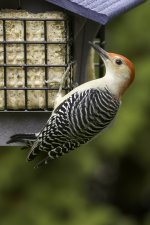I'm not trying to start a flame war, so please take my comments in context from my experience as a photographer. I recently purchased a Kowa TSN 883 with 25-60 eyepiece, phone adapter, and Kowa adapters for my Canon professional bodies. I am blown away by the optics looking through the scope with my eye. I am far less satisfied with the image quality with my Canon body attached, and even less so phone scoping. I've been a photographer for 40 years, but not video (I only mention video as I know some folks are taking 4K video or higher through their scope and obtaining prints from this). My tripod is the best 3 section carbon that Manfrotto sells. The images just don't cut it compared to when using a 100-500mm Canon RF even with a 2x teleconverter. I suspect my expectations were just too high. I love the idea of a 2000mm focal length, but I'm just disappointed to the point where I may sell the entire setup. Have other folks experienced the same thing?
Thanks,
Joe
Thanks,
Joe






